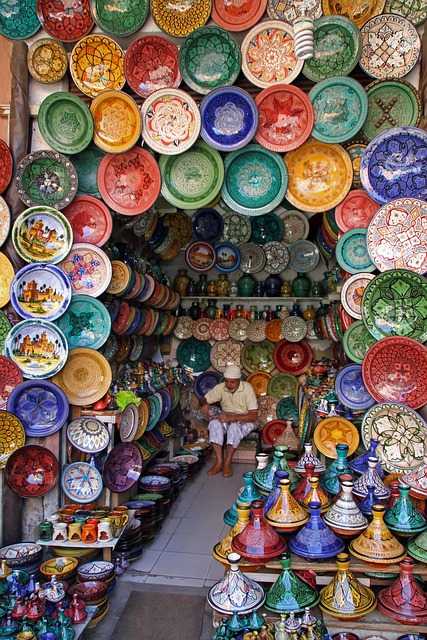Table of Contents
- Exploring the Evolution of American Fine Art and Its Influential Movements
- Spotlighting Iconic American Fine Artists and Their Signature Styles
- Embracing Modern Techniques: How Technology Shapes Contemporary American Art
- Navigating the Art Market: Tips for Collecting and Investing in American Fine Art
- Q&A
- In Conclusion
Exploring the Evolution of American Fine Art and Its Influential Movements
The journey of American fine art is a captivating narrative woven through time, reflecting the country’s diverse cultural roots and social transformations. Initially, artists like Charles Willson Peale and John Singleton Copley established a foundation that emphasized portraiture, showcasing the prominence of individuals in the emerging American society. Their works not only captured the likenesses of significant figures but also encapsulated the values and aspirations of a nation finding its identity. As the 19th century unfolded, the essence of American art began to blossom through movements such as Romanticism and Hudson River School, highlighting a growing appreciation for the natural landscape and emotions associated with the American experience.
As we moved into the late 19th and early 20th centuries, a wave of new artistic expressions emerged, reflecting the rapid industrial changes and cultural shifts of the era. The Ashcan School, with artists like Robert Henri and George Bellows, brought forth a gritty realism that confronted urban life, focusing on the everyday experiences of ordinary people. This period also witnessed the American Modernism movement, where figures such as Marcel Duchamp and Georgia O’Keeffe redefined boundaries by integrating abstraction and innovative techniques. The desire to break away from traditional forms led to the exploration of new mediums, which laid the groundwork for subsequent art movements.
The mid-20th century marked a pivotal shift with the advent of Abstract Expressionism, where artists like Jackson Pollock and Mark Rothko became vanguards of this powerful movement. Characterized by spontaneous brushwork and a vigorous embrace of emotional expression, this era set the stage for America to become a significant force in the global art scene. Other movements such as Pop Art, led by Andy Warhol and Roy Lichtenstein, further blurred the lines between fine art and popular culture, challenging perceptions and inviting audiences to engage in new dialogues about consumerism and society.
Today, American fine art continues to evolve, embracing a vast array of styles and techniques that reflect the complexities of contemporary life. The influence of technology, globalization, and diverse cultural perspectives has given rise to vibrant art scenes across the nation, from urban galleries to outdoor installations. Notable contemporary artists, such as Kara Walker and Jeff Koons, merge traditional practices with modern themes, continuing the conversation on identity, race, and societal structures. With this fluidity and innovation, American fine art remains a vivid tapestry, forever adapting to the voices of its time and enriching the cultural landscape.


Spotlighting Iconic American Fine Artists and Their Signature Styles
In the rich tapestry of American art, several fine artists have emerged, each leaving an indelible mark on the cultural landscape with their unique styles and visionary perspectives. These artists, through their distinctive approaches and mediums, have not only shaped the art world but have also reflected the evolving narratives of American society. Below are some of the most iconic figures, each celebrated for their original expressions:
- Georgia O’Keeffe: Renowned for her breathtaking large-scale flowers and striking landscapes, O’Keeffe’s art is characterized by a keen sensitivity to color and form. Her ability to convey emotion through simplicity and abstraction made her a pivotal figure in the modern art movement.
- Jackson Pollock: Known for his revolutionary drip painting technique, Pollock’s work exemplifies the chaotic beauty of spontaneity and movement. His signature style, often described as abstract expressionism, captures energy in a way that invites viewers to engage with the process as much as the final image.
- Andy Warhol: A leader in the Pop Art movement, Warhol’s signature silkscreen prints of cultural icons redefined the relationship between art and commercialism. His work, often infused with irony and social commentary, reflects the complexities of contemporary life, making high art accessible to the masses.
- Mark Rothko: Celebrated for his large, color field paintings, Rothko aimed to evoke deep emotional responses through his use of color and scale. His layered compositions create a meditative atmosphere, inviting viewers to lose themselves in the meditative experience of his vibrant palettes.
Throughout the history of American art, these artists have navigated the interplay between personal expression and wider societal themes. Their work has inspired countless other creators, urging them to explore their unique narratives through various mediums. The impact of these fine artists is not confined to their time; their legacy continues to influence contemporary practice.
To better understand the diverse influences and styles of these amazing artists, the following table summarizes their key characteristics:
| Artist | Signature Style | Medium | Key Themes |
|---|---|---|---|
| Georgia O’Keeffe | Fluid abstraction, floral imagery | Oil on canvas | Nature, femininity |
| Jackson Pollock | Drip painting, action painting | Enamel and oil paint | Spontaneity, chaos |
| Andy Warhol | Pop art, silkscreen techniques | Silkscreen, acrylics | Consumerism, celebrity |
| Mark Rothko | Color field painting | Oil on canvas | Emotion, spirituality |
As we explore the diverse realms of American fine art, it becomes evident that each of these iconoclasts has contributed to a broader dialogue about identity, culture, and the human experience. Through their signature styles, they continue to captivate audiences, encouraging reflection and connection in times of change.


Embracing Modern Techniques: How Technology Shapes Contemporary American Art
In the ever-evolving landscape of American art, technology has emerged as a powerful collaborator for contemporary artists. From digital painting software that allows for stunning visual effects to 3D printing technologies that enable tangible manifestations of creativity, the integration of modern techniques has significantly transformed the artistic process. Artists today are utilizing these tools to push the boundaries of their work, creating pieces that resonate with the complexities of modern society while engaging diverse audiences through interactive experiences.
One notable example of this intersection between art and technology is the use of augmented reality (AR). Artists are now crafting installations that can be experienced through mobile devices, allowing viewers to engage with the artwork in a dynamic way. This not only enhances the aesthetic experience but also encourages deeper reflections on the themes presented in the artwork. Some popular forms of AR in art include:
- Interactive sculptures that change when viewed through an AR app.
- Digital overlays that provide context and background information.
- Virtual galleries that can be explored from any location.
Moreover, social media platforms have become essential tools for artists to share their work and connect with wider audiences. Online exhibitions, Instagram shares, and video streams provide artists with unprecedented opportunities to showcase their talents. This increased visibility allows for real-time feedback and engagement, fostering a community that transcends geographical boundaries. Additionally, with the rise of platforms like NFTs (non-fungible tokens), artists are exploring new avenues for ownership and revenue that challenge traditional art market structures. Many are contemplating the implications of owning digital art in a world increasingly reliant on technology.
Furthermore, traditional artistic methodologies are being redefined through algorithm-driven art. Artists leverage machine learning to create works that are not just influenced by human decision-making but are also responsive to patterns and trends within society. This innovative approach fosters a dialogue about authorship and creativity in the digital age. Consider the following forms of algorithm-driven art:
| Art Form | Description |
|---|---|
| Generative Art | Created using algorithms that produce unique outputs based on set parameters. |
| AI-Generated Portraits | Images crafted by neural networks that analyze existing artworks to create something novel. |
| Interactive Installations | Artworks that respond to the viewer’s movements or actions, incorporating real-time data. |
These modern techniques enrich the canvas of American art, fostering a space where innovation and tradition can coexist. As technology continues to advance, the artistic narrative will undoubtedly evolve, revealing new forms of expression that empower artists to reflect on the ever-changing tapestry of human experience.


Navigating the Art Market: Tips for Collecting and Investing in American Fine Art
Building a collection of American fine art is not just about purchasing pieces; it’s about developing a sense of appreciation for the creativity and historical context behind each work. Start by immersing yourself in different art styles and movements, from the realism of the Hudson River School to the modern expressions of Abstract Expressionism. This foundational knowledge helps you discern the significance of various artists and their contributions to the art world.
When considering investments, it’s vital to assess the potential value of the artworks. Focus on emerging artists who show promise in their talent and potential for growth. Often, new talent can be sourced through local galleries, art fairs, and online platforms. Keep these factors in mind:
- Artist’s Background: Investigate their education, prior exhibitions, and media coverage.
- Market Trends: Stay aware of which styles and artists are trending through auction results and sales reports.
- Provenance: Ensure the authenticity and ownership history of your chosen pieces.
Another strategy is to network within the art community. Connecting with other collectors, attending gallery openings, and participating in workshops can provide invaluable insights into market dynamics and emerging talents. Many art collectors find immense value in joining art groups or networks, which often offer exclusive previews of new collections and direct access to artists. Don’t hesitate to leverage social media and platforms like Instagram to keep an eye on artists’ works and engage with the artist community.
When it comes to the practicalities of collecting and investing, consider the space where your art will be displayed. Proper lighting and environmental controls can enhance the artwork’s appearance and longevity. Additionally, think about documenting your collection properly, with details about the acquisition, condition reports, and exhibition history. A well-maintained collection can bolster its value over time, as illustrated in the table below, showing how different factors can affect investment potential:
| Factor | Impact on Value |
|---|---|
| Artist Recognition | High |
| Condition of Artwork | Moderate to High |
| Market Demand | High |
| Exhibition History | Moderate |
